Top 7 Famous Temples in Varanasi You Can’t Miss
Famous Temples in Varanasi: Varanasi, also called Kashi or Banaras, the city of Lord Shiva, is believed to achieve liberation.…
 0%
0%

Situated in the peaceable village of Uthirakosamangai in Tamil Nadu’s Ramanathapuram district is an ancient and divine temple – Uthirakosamangai Temple, devoted to Lord Shiva in the form of a Maragatha Lingam (emerald Shiva Lingam – a rare type of Lingam).
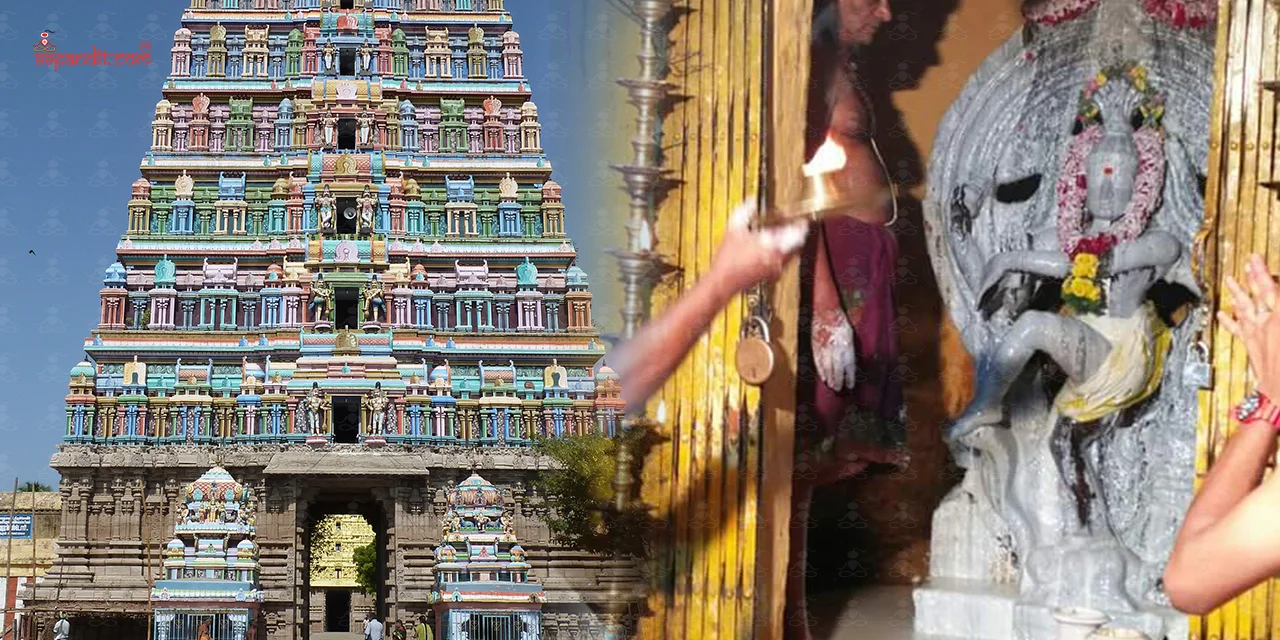
It is a powerful spiritual center as well as a living demonstration of Tamil Shaivism and the ancient tent culture. It is believed to be 3,000 years old, and it is rich in mythological significance.
According to legends, the temple name derives from the fact that it was the location where Lord Shiva explained (Uthira Kosam) his cosmic secrets of creation to Parvati Devi.
The Maragatha Lingam is unique due to the fact that it stays under sandal all the time, until Arudra Darshan, when it can be seen, at this auspicious time of year, steeped in great spiritual energy.
Uthirakosamangai Temple has traditional South Indian temple timings, but there are two main darshan opportunities each day.
Uthirakosamangai Temple is open every day.
The temple claims to open, for the most part, beforehand, with Suprabhata Seva (early morning prayer on prescribed days of the month).
This typically begins at sunrise, as well as abhishekam and archanai, in the early morning when the temple’s energy is at its most powerful, there is a fragrance of camphor filling the temple with chanting sounds.
The evening darshan after sunset is also a nice chance, as the lamps are lit in the temple, a cool, slow breeze can be felt, and the inner sanctum resonates with silence.
The most favorable time to visit the temple is from November to February, when it is cooler and provides events like Margazhi-Atsavam and Thiruvadhira.
“Uthirakosamangai” is not just a name, but a divine moment between Shiva and Parvati. Its meaning is as follows:-
Thus, Uthirakosamangai means “the place where the sacred secret was shared with Mangai (Parvati),” thereby making the tabernacle a living symbol of cosmic knowledge and cosmic union.
The structure of the Uthirakosamangai Temple possesses a timeless Tamil idiom and a deep spiritual intention.
Every square inch conveys silence, sacredness, and artisanal skill passed on through generations. It isn’t just a building, but a spiritual geometry that is engineered to uplift the spirit.
1. Traditional Dravidian Architecture: It is in traditional Dravidian construction, complete with pyramidal gopurams (entrance towers), inner courtyard, stone structures which have been embellished with stone carving – all in accordance with Agama Shastra.
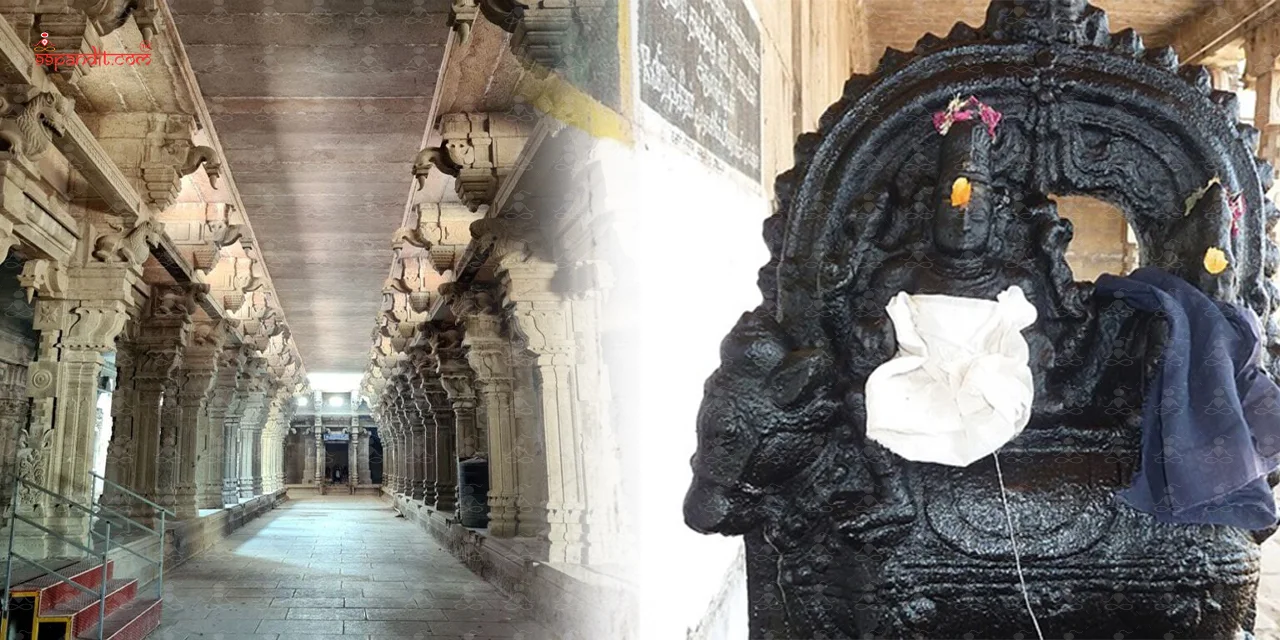
2. Royal Rajagopuram: The main gopuram, whilst not as large as those of city temples, is expertly sculpted with divine figures and mythological representation. It is the ‘midpoint’ transition from the mundane to the sacred realm.
3. Garbhagriha (Sanctum Sanctorum): Located at the temenos is Maragatha Lingam (Emerald Shiva) alongside Mangaleshwari Devi, which are forever ensconced in an all-but-silent and quiet inner domain that is imbued with energy.
4. Stone Mandapams (Halls): The four stone mandapams are entrusted with carved pillars revealing Shiva mythological images as well as images from old Tamil writing — basically a scroll through divine history.
5. Temple Tank: Theertham (holy water tank) is a part of the temple design that follows Vastu ad. It is utilized for various rituals.
Water-based rituals have many aspects that follow the traditions of Shastra, which is what is known in Vastu ad. ritual, through action sequences.
6. Untouched Sanctuary: The unique selling point is the fact that it is untouched with its original charm. No one has witnessed any altered renovations to this day, leaving the ancient presence alive in everyday reality.
7. Sacred Layout: The physical layout and layout in spiritual life have all been put together to reflect the balance of strength and piety.
Hindu temples serve more than ritual purposes; they are cosmic diagrams, designed to represent the divine order of the cosmos and to align human consciousness with the supreme.
Uthirakosamangai Temple, one of the oldest Shiva temples in Tamil Nadu, is the eternal witness to this sacred evolution.
Vedic Beginnings and Early Genesis:
The divine name “Uthirakosamangai” has its origin in a divine episode between Lord Shiva and Goddess Parvati.
Traditionally, this is the site where Lord Shiva revealed the knowledge of the Vedas to Parvati.
Being a devoted disciple and consort, requesting Shiva to disclose the universe’s hidden wisdom with which both are intimately familiar, Shiva, full of conforming love, compassion, devotion, and reverence, disclosed eternal secrets into her ear under a sacred tree on the temple property.
The name itself reflects this act: “Uthiram” means secret, “Kosam” means to reveal, and “Mangai” is a loving term for Parvati; therefore, Uthira-Kosa-Mangai is “the place where the secret was revealed to the goddess.”
This tale does not merely lend the temple its name; it provides the temple with its spiritual power, embodying it as a center of divine knowledge, silence, and sacred union.
The temple has a number of legends associated with it, but one that has intrigued everybody is the association of Ravana and his wife Mandodari, the royal couple from Lanka.
Both were born devotees of Shiva, and tradition states that they would worship at Uthirakosamangai with unwavering faith and regularity.
Certain Tamil Shaiva traditions even go further, by indicating that Shiva himself took charge of the divine wedding of Ravana and Mandodari.
The extraordinary blessing of this divine event immortalizes the temple as the witness of one of the most unique marriages in mythology.
We must recognize that the rituals and practices that are offered in worship have great care and intention to offer maximum respectfulness and recollection of the story, and the beauty of the tradition, especially in the context of the ancient Tamil ways of life and the Saivite method of worship.
Arudra Darshana is considered the most important festival of the temple, which falls in the Tamil month (December–January).
During this festival, the temple offers the rare opportunity to pay public darshan (viewing) of the Maragatha Natarajar (Emerald Dancing Shiva) idol.
This large idol is hidden for the rest of the year, and it is a spectacular idol that is believed to be made entirely of emerald and emanates spiritual vibrations.
People come from far away to experience a glimpse of the divine one time a year, fully appreciating their most faithful prayers and devotion.
At the temple, we honour the cosmic feminine nature of the Divine during Navratri in a variety of ways with abhishekams and alankarams for Mangaleshwari Devi.
Similarly, devotees around the globe celebrate Maha Shivaratri, the night of Shiva’s cosmic dance, by participating in bhajans, abhishekam, and chanting all night long.
Every year contains many celebrations such as Panguni Uthiram, Aadi Pooram, and Thai Poosam that have abhishekam rituals connected to both Shiva and Parvati.
Each celebration involved a procession, Vedic chanting, and consequently, temple chariot pulling.
Visiting Uthirakosamangai Temple isn’t a mere physical journey; it’s an emotional pilgrimage.
This temple is a desert of sacred energy and a sublime abode of mystical peace in which all devotees will experience peace, blessings, and soul elevation.
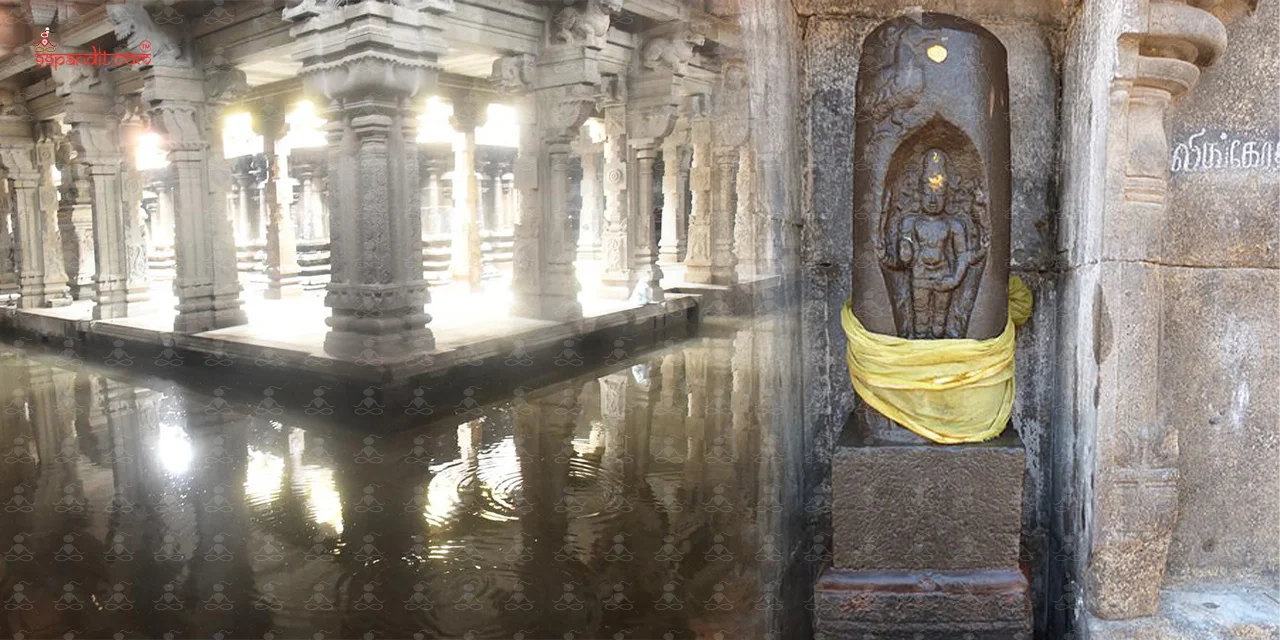
For saints and seekers who have traveled to this temple since ancient times, this temple in itself is commonly referred to as a tapovana – a space where divine wisdom intersects with heart-centered devotion.
The rare and most auspicious darshan of Maragatha Nataraja, widely considered to be a pure piece of emerald, is said to cleanse one’s essence.
Just one darshan of this god on the important occasion of Arudra Darshan is reputed to yield punya (spiritual merit) equivalent to years of penance from austere meditation.
Devotional rituals offered to the divine couple at this temple are said to strengthen and balance energy in all relationships and also remove obstacles we encounter in getting married and achieving spiritual discipline.
In particular, Mangaleshwari Devi blesses women with empowerment, health, wealth, and prosperity.
Legends abound of the sacred spot where Lord Shiva called the most hidden Vedic secrets and shared them with Parvati.
Meditating or chanting in this sacred atmosphere is said to better one’s spiritual awareness for future lives and help one to gain moksha (the ultimate liberation).
Many devotees can be found coming and doing pariharams (rituals) for doshas from planetary affliction, especially for Shani (Saturn) and Rahu-Ketu doshas.
It is suggested that this temple energy provides healing from karmic blocks and provides healing from within.
The atmosphere of the temple alone provides the ambiance of peace to foster tranquillity, surrounded by ancient trees, holy ponds, and silence.
Pilgrims describe clarity of mind, emotional release, and spiritual renewal after spending time on the temple property.
At the spiritual center of the Uthirakosamangai Temple is a unique and priceless holy wonder: the Emerald Maragatha Shiva Lingam and the gorgeous Mangaleshwari Devi, Lord Shiva’s wife.
Together, these murthis (idols) represent the union of Purusha (the divine male) and Prakriti (the divine feminine), which constitutes the cosmic balance that sustains all life.
The presiding Deity is Lord Shiva, and the Lord is called by the name Mārakadeshwar, and is in the form of a Maragatha Linga (i.e., linga made out of Emerald).
This rare, all-natural stone is not only a physical wonder, but it also has spiritual significance.
In Hinduism, it is a Sattvic stone, which brings and maintains harmony in the life of the user.
Since the Lingam is emerald, it emits that energy threefold, which draws in thousands of devotees every year.
This lingam is not open to the public during the year. It is maintained by periodically smearing it with sandalwood paste, which is said to keep the stone potent along with its cosmic fields.
The chandan is removed once a year on Arudra Darshanam, also known as Margazhi Thiruvathirai, the day that corresponds to the cosmic dance of the Lord (Ananthadhanam).
This darshan is very sacred, and it is said by sages that to have darshan of the Maragatha Lingam on this day releases lifetimes of karma and gives moksha.
To the right of the Lingam is Mangaleshwari Devi, an incarnate of Goddess Parvati. She is the divine wife of Lord Shiva, the divine abode of auspiciousness and grace.
With the Abhaya (protection) and Varada (boon-giving) mudras, the goddess is seated in a serene and authoritative posture, signifying her readiness to bestow blessings and protection upon her followers.
The temple’s holiness is enhanced by Mangaleshwari’s close proximity to Maragatha Shiva.
Combined, they represent the cosmic joining of Shakti and Shiva — energy, consciousness, creation.
1. Whispers of the Chandan Mystique:
Worshipers believe that if anyone tries to remove the sandalwood paste from the Maragatha Shiva without permission from the gods, incalculable bad luck will be their destiny. This belief maintains the sanctity of the lingam and talks about its mystic powers.
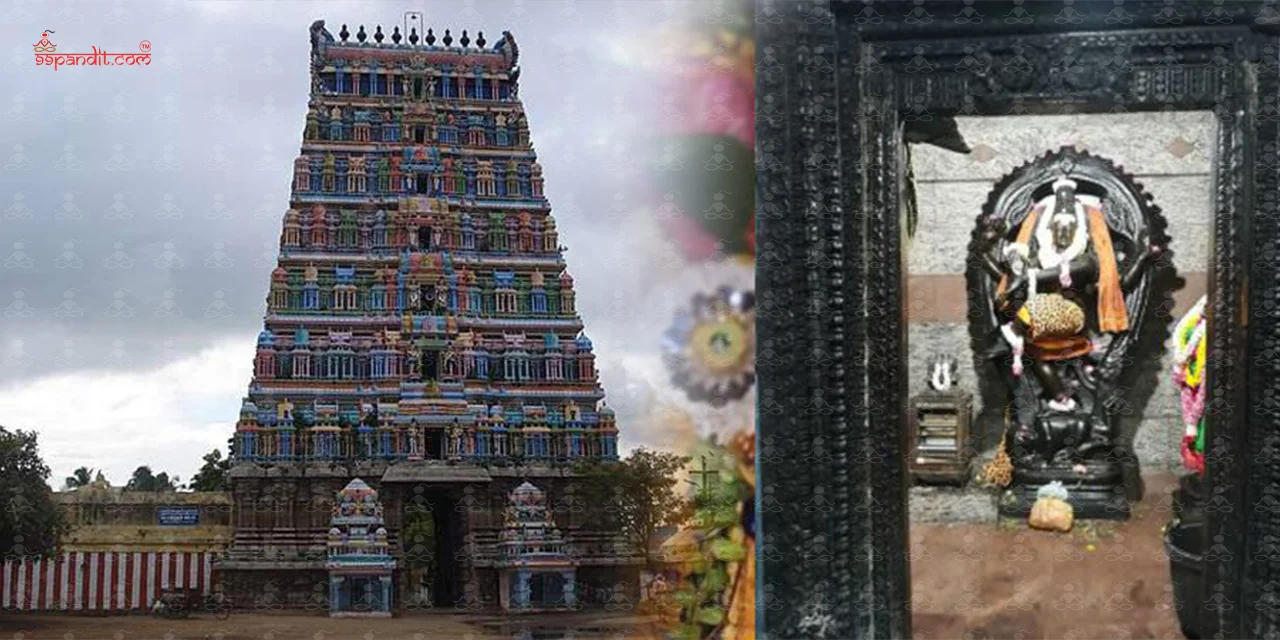
2. Hidden Divine Dialogue:
There is a myth that at midnight, the divine couple, Lord Shiva and Goddess Mangaleshwari, engage in cosmic dialogue.
The priests and the old villagers have a view that such spiritual dialogue can be “heard” by the devout-minded devotees in deep meditation.
3. Temple Sand Healing Powers:
The sand that lines the innermost part of the temple is believed to be healing in nature.
Faithful at times harvest small amounts for blessings, especially for diseases and inner peace.
4. Ravana’s Devotion Continues:
According to local legends, Ravana’s deep love for Lord Shiva is forever counted in this temple.
Every resident feels that he has given the temple a tangible spiritual energy, especially for the underprivileged who require additional self-control or the gift of artistic ability.
The temple can be accessed through a good chain of highways. Buses, taxis, and personal cars travel frequently from surrounding towns (e.g., Ramanathapuram, Paramakudi, Madurai, and Rameswaram) to Uthirakosamangai.
Most of the pilgrims would often plan Uthirakosamangai along with a divine circuit of Rameswaram, Devipattinam, and several other old shrines.
The nearest railway station by rail is Ramanathapuram Railway Station, 17-18 km away.
Daily railway links are available from cities like Madurai, Chennai, Rameswaram, and Tiruchirappalli, and they have daily trains, as well as express trains.
Auto-rickshaws and taxis are easily available from the railway station in order to reach the temple.
Madurai International Airport is 130 km from there are the nearest airport. Domestic flights are available daily to the connecting cities of Chennai, Bangalore, and occasionally international flights to the cities of Colombo.
One can book a cab or bus from the airport to Ramanathapuram and then transfer to Uthirakosamangai.
Surrounded by sandalwood paste year-round, and only revealed and placed in puja on Arudra Darshan, represents both divine and enigmatic qualities.
As revered is Goddess Mangaleshwari Devi is always seen holding the hand of Lord Shiva in marriage, providing peace, fertility, and spiritual consciousness to all devotees.
From the legends of Shiva imparting secrets of the cosmos and existence to Parvati, to the belief that this temple was the place of marriage between Ravana and Mandodari, every stone of this temple can tell stories beyond time and space.
While this temple is set in a secluded, quiet village, it draws thousands of devotees annually and maintains a strong spiritual ambiance.
On its own merits of history, festivities, or simply a woodshed mind as you walk the temple space, Uthirakosamangai invariably imprints its mark on every heart. More than a temple, it is a sacred dialogue between the soul and the holy spirit.
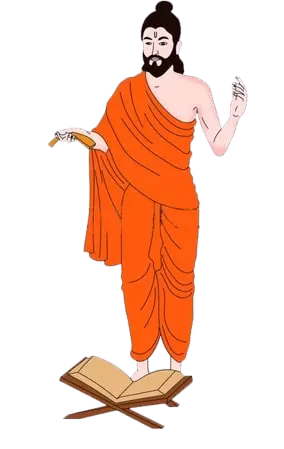
100% FREE CALL TO DECIDE DATE(MUHURAT)

Table Of Content
Filters by categories
All Pujas
Puja On Special Events
Upcoming Pujas
Dosha Nivaran Pujas
Mukti Karmas
Filters by Trending Topics
Filters by Regions
North Indian Pujas
South Indian Pujas